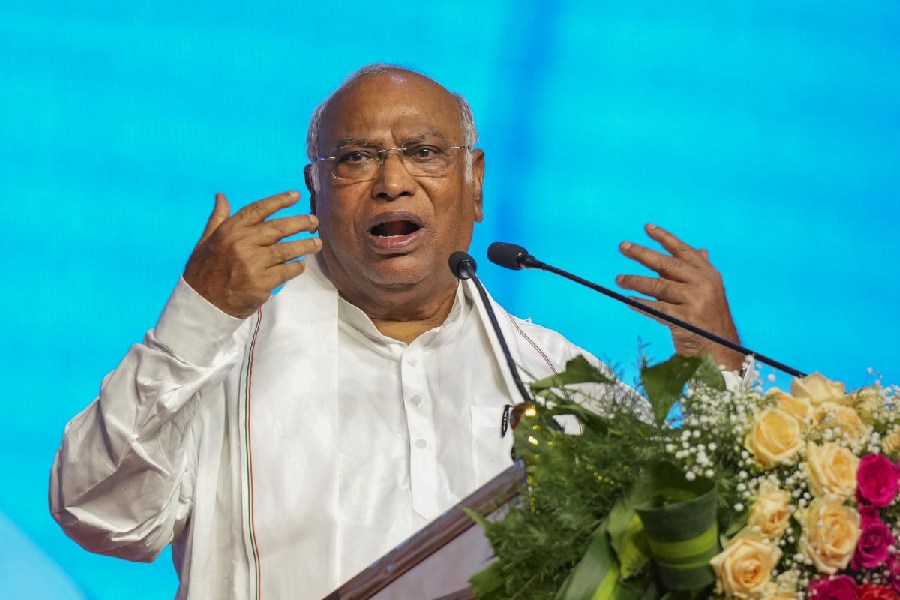|
|
| High quality neuroses |
mukulkesavan@hotmail.com
English language newspapers in India are chronically, genetically, pan-Indian in their instincts. They address the Nation. Were there to be a large pogrom anywhere in India, the headlines in The Telegraph would be the same as the headlines in The Hindu because the editors of both newspapers and their readerships would see the pogrom as a national or republican crisis. This is true irrespective of the geographical spread of the paper’s readership: the Deccan Herald, which has no readers in Gujarat, would report the carnage there in broadly the same way as The Times of India, which does. The similarity has to do with the language in which the papers appear, English, and the self-image of their English-reading subscribers.
For the members of this paper-thin, postcolonial middle-class, English is a ticket to white-collar jobs in large corporations and bureaucracies that are pan-Indian in their organizational structure. Their friendships and rivalries, formed in the course of transferable careers, are conducted in English. And while the language of intimacy and camaraderie (with, say, school and college friends) might be Bengali or Kannada, the large fact of an education in English consolidates anglophones into a club which deep within itself believes that fungible knowledge, like sterling silver, comes hallmarked in English.
For this class, the English-language newspaper performs a double function. The first is the tanpura function: to be English-speaking in a world that’s not, the anglophone needs to practise. Crucial for his riyaz every morning is the English newspaper, which, like a reliable drone, daily supplies him with the note at which he can pitch his life.
The English broadsheet’s second function is to supply its reader with a new English language episode in the life of the world as seen from India. At the start of every day, between bed tea and potty, The Telegraph or The Times of India allows its readers the comfort of believing that in spite of the mess of languages and dialects in which their daily lives happen, the world that’s fit-to-print occurs in English. Newspapers everywhere in the world report and editorialize: to these tasks, the English newspaper in India adds the tremendous responsibility of translation, of converting the chaos of vernacular life into the ordered periods of English.
It is an epic business: news that has its origins in the words and actions of Kashmiri separatists, Gujarati goons, Tamil bandits like Veerappan, Punjabi pop stars like Daler Mehndi is subbed into column upon column of temperate English prose over a dozen broadsheet pages, day after day after day. The reason that something as difficult and labourious and improbable as this happens routinely, and the reason why this relatively small group of English-speakers sustains so many English newspapers (Delhi at last count had seven broadsheet English papers — New York has one and a half) is because the column inches which anglophones inhale every morning are as vital as the air they breathe...they are, in fact, the air they breathe. Language isn’t just a medium; it is an ether that envelops its speakers. In India it’s hard to find much English in the ordinary air: so it’s bottled in a broadsheet paper and delivered to your door every morning. It’s your oxygen cylinder, your daily fix.
To a degree that’s hard to imagine, this English-speaking class inhabits a world invented by the newspapers it reads. The claim to English is also a claim to being urbane, cosmopolitan and modern, or more accurately, a nervous denial that anglophones are unsophisticated, provincial or backward. This is a posture that’s hard to sustain on third world incomes, amid urban squalor, surrounded by violent sectarianism of every kind. India’s English newspapers reflect this tension: they are ingratiating, illiterate, knowing, shallow and self-important; they are also, in varying degrees, pluralist, moderate, liberal and determinedly pan-Indian.
Both their weaknesses and their strengths spring from the odd relationship India’s English newspapers have with non-English-speaking India. On the one hand, these newspapers count for little because their constituency is so small. Bal Thackeray will tolerate endless criticism from The Times of India because its reports and editorials cut no ice on the street. But the editor of the Maharashtra Times used to be regularly assaulted by Shiv Sena goons because Thackeray would countenance no criticism in Marathi.
The reportage of the English press in India often has a voyeuristic feel to it because the language itself suggests an outsider peeping in. This lack of insider status is not always a bad thing because it helps insulate the paper from parochial feeling. For example, I am always impressed by the evenhandedness of The Hindu, a newspaper published out of Tamil Nadu’s capital, Chennai, in the matter of the Cauvery river waters dispute between Tamil Nadu and Karnataka.
The even more important example of non-parochial truth-telling was the record of the English language press in reporting the post-Godhra pogrom in Gujarat. The contrast between the bigotry of Gujarati newspapers and the relentless reporting of the anti-Muslim pogrom in the English language press, specifically the Ahmedabad edition of The Times of India, reminded us that the English press’s understanding of India often has little to do with the alienating effect of language and everything to do with its attachment to India. Entire, the whole rather than any constituent part. This attachment might spring from existential need rather than elevated principle — still, it’s a pan-Indian reflex out of which much good has come.
The Hindu, The Times of India, The Indian Express, The Statesman, The Telegraph, The Hindustan Times, the Deccan Herald: very different papers published from places thousands of miles apart which still manage to share a set of similar and broadly civilized ideas about India. If newspapers exist to address the anxieties of their readers, the readers who have sustained these papers can congratulate themselves for cultivating high quality neuroses.











